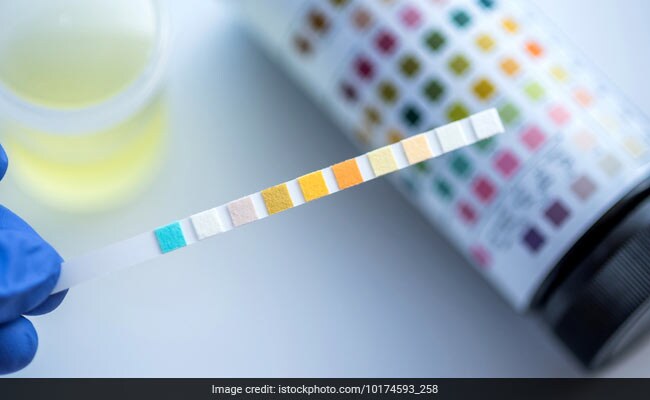The findings showed that a substance indicating oxidative damage increases in urine as people get older.

This new marker provides a method to measure how much our body has aged
HIGHLIGHTS
- Urine test could help predict our risk of developing age-related disease
- As we age, we suffer increasing oxidative damage
- The study is published in the journal in Frontiers in Aging Neuroscience
A simple urine test may determine how much people are getting older biologically, an advance that could help predict the risk of developing age-related disease and even death. The findings showed that a substance indicating oxidative damage increases in urine as people get older. This new marker potentially provides a method to measure how much our body has aged -- our biological rather than chronological age. While everyone born in the same year has the same chronological age, the bodies of different people age at different rates.
The urine test could help predict our risk of developing age-related disease, and even our risk of death, the researchers said.
"Oxygen by-products produced during normal metabolism can cause oxidative damage to biomolecules in cells, such as DNA and RNA," said Jian-Ping Cai, from Beijing Hospital.
"As we age, we suffer increasing oxidative damage, and so the levels of oxidative markers increase in our body," Cai said.
One marker, called as 8-oxo-7,8-dihydroguanosine -- or 8-oxoGsn for short -- results from oxidation of a crucial molecule -- oxygen -- in our cells called RNA.
Previous studies showed that 8-oxoGsn levels increase in urine with age in animals.
In the new study, published in the journal in Frontiers in Aging Neuroscience, the team measured 8-oxoGsn in urine samples from 1,228 Chinese residents aged 2-90 years old.
"We found an age-dependent increase in urinary 8-oxoGsn in participants 21-year-old and older," Cai said.
"Urinary 8-oxoGsn may reflect the real condition of our bodies better than our chronological age, and may help us to predict the risk of age-related diseases," Cai said.
Interestingly, levels of 8-oxoGsn were found roughly the same between men and women, except in post-menopausal women, who showed higher levels.
This may have been caused by the decrease in estrogen levels that happens during menopause, as estrogen is known to have anti-oxidant effects, the researchers said.
(This story has not been edited by NDTV staff and is auto-generated from a syndicated feed.)
DoctorNDTV is the one stop site for all your health needs providing the most credible health information, health news and tips with expert advice on healthy living, diet plans, informative videos etc. You can get the most relevant and accurate info you need about health problems like diabetes, cancer, pregnancy, HIV and AIDS, weight loss and many other lifestyle diseases. We have a panel of over 350 experts who help us develop content by giving their valuable inputs and bringing to us the latest in the world of healthcare.














